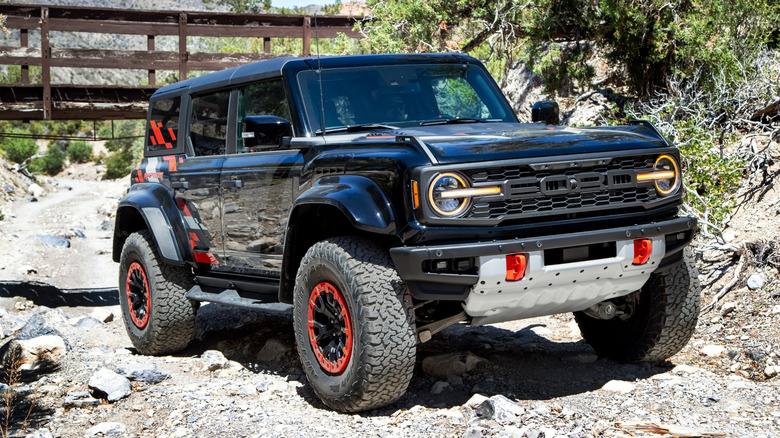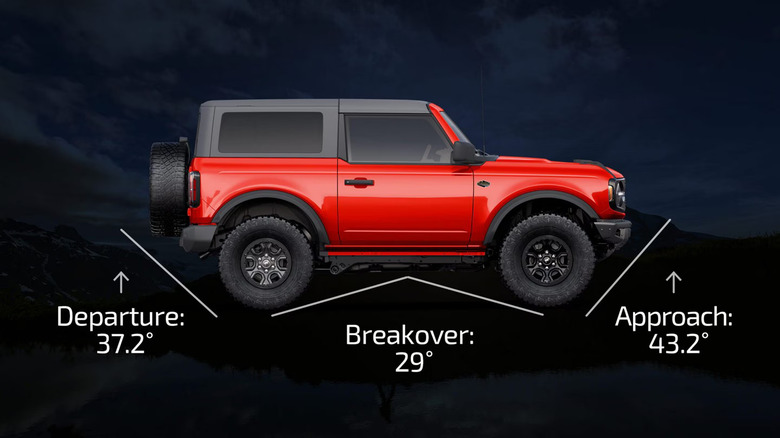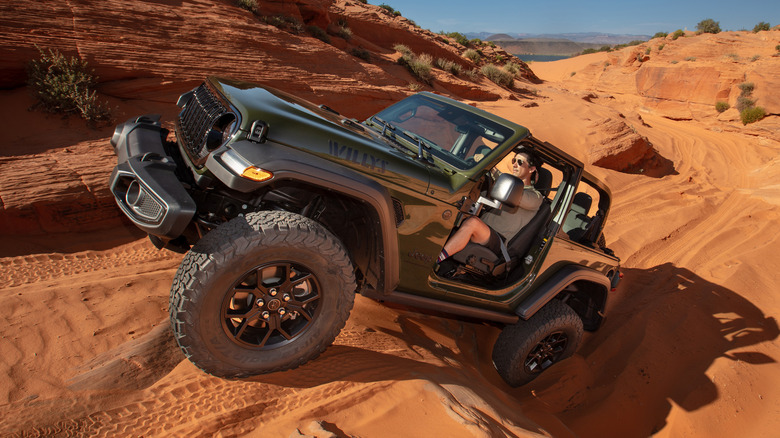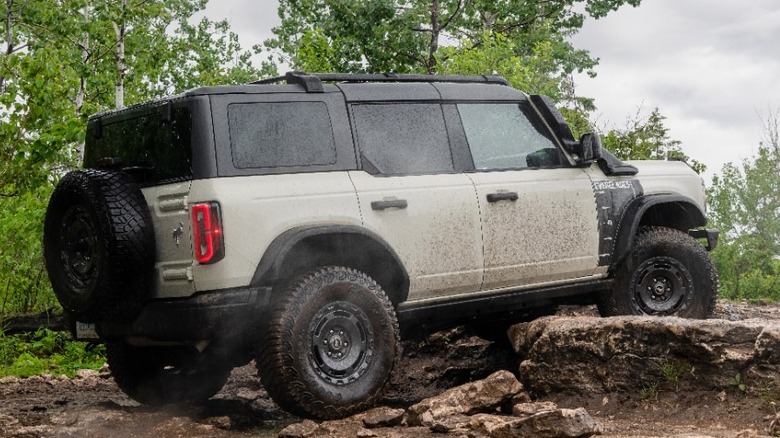What Are Approach And Departure Angles? And What Do They Mean For Your SUV?
Heavy-duty trucks are getting larger and more capable every year, and engines are getting more powerful and faster with each passing day, it seems. Meanwhile, SUVs seem to be getting more capable at tackling tough terrain at a similar rate. Big, knobby, all-terrain tires are available on just about every outdoor-friendly SUV you can buy. Lifted suspension, disconnecting sway bars, electronically-locking differentials, and off-road camera systems are available from the factory across various manufacturers. If you want to explore the outdoors in a brand new vehicle, now seems like a great time to do it.
All of this off-road equipment adds up to serious capability, but to put it into context, it's worth exploring the specific numbers –- and that's where approach and departure angles come in. Approach and departure angles (as well as breakover angles, which we'll discuss too) are measurements used to help determine just how steep an off-roading obstacle can be before a vehicle's bumpers make contact. Essentially, these angles give you insight into whether or not you're going to lose traction or scrape your SUV's bumpers when off-roading.
How are approach and departure angles measured?
Manufacturers of off-road capable vehicles typically list the approach and departure angles in their spec sheets. For example, depending on trim level, Jeep lists the approach angles of the current Wrangler between 41.4 degrees and 47.4 degrees depending on trim. The departure angle is listed between 35.9 degrees and 40.4 degrees -– also depending on trim level and specific equipment levels. But how do you get to these numbers?
Approach angles are measured by drawing a straight line from where the front tires contact the ground, to the lowest part of the front bumper. Departure angles are measured the same way, but in the rear of a vehicle. If you can't find the specs for your own vehicle on the manufacturers website, or if you've significantly modified your vehicle, it's also something you can do on your own with a yardstick and an online calculator. The higher off the ground a vehicle is, or the closer to the tires the ends of a vehicle are, the larger the angle will be. And, the larger the approach angle, the closer a vehicle can get to an obstacle or a change in terrain without scraping. That's why, on off-road vehicles like the Jeep Wrangler, Ford Bronco, and Toyota 4Runner, the wheels are pushed as far forward and rearward as possible, respectively -– allowing for maximum potential approach and departure angles.
What can I do to increase approach and departure angle?
There are a few simple ways to change your approach and departure angles. The first is changing the height of your vehicle. A lift kit (also known as lifted suspension) will certainly help your approach and departure angles because the higher your bumpers are, the bigger your approach and departure angles will be. The more you lift your vehicle, the less likely you are to hang up your front or rear bumper on an off-road obstacle. Increasing general ground clearance is a positive effect of lifting your vehicle, but a big lift may require additional suspension modifications to properly work on your vehicle.
Adding larger tires to your SUV can help accomplish the same goal. Depending on the diameter of new tires, you can significantly increase your SUV's ride height, and as a result, lower the likelihood of getting stuck. Another, slightly more involved way of changing approach and departure angles is changing your bumpers. There are several off-roading bumpers available from aftermarket suppliers that decrease a vehicle's overhang, as well as adjusting the angle of the bumper's sheet metal to avoid it getting hung up. Finally, if the manufacturer of your vehicle hasn't already installed skid plates on your off-road-ready rig, those may help protect the underside when your approach or departure angle isn't quite big enough.
What is breakover angle and why does it matter?
Approach and departure angles relate to crawling over obstacles and driving away from them. Those measurements are important when going up or down a steep incline or transitioning to or from a flat bit of terrain. There's another measurement that you should pay attention to, however, and it's called breakover angle. Breakover angle is measured between the tires, and like approach and departure angles, the higher the breakover angle, the less likely you are to get caught up on an obstacle. Online calculators are also available if you want to measure your vehicle's breakover angle.
Where breakover is most relevant is when a large obstacle is between your tires or when you're at the peak of a hill. If you're off-roading on particularly rocky terrain, you may be able to climb up large obstacles like rocks or logs, but if your breakover angle is particularly low, you can get caught up on those same obstacles in the center of the vehicle. High-centering, as it's known, is more likely to happen with longer chassis. Long overlanding vehicles like vans are particularly prone to this kind of hang-up. The long distance between the front and rear tires affects the breakover angle, making them more likely to get stuck on something in between the tires. That's why many off-roaders prefer short-wheelbase, two-door versions of off-road SUVs like the Jeep Wrangler or the Ford Bronco.



